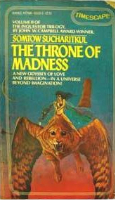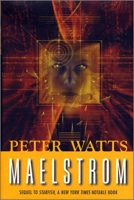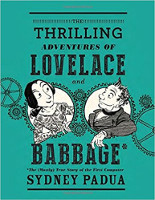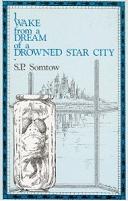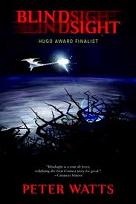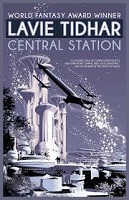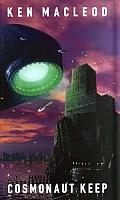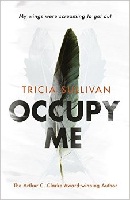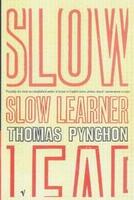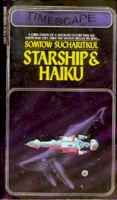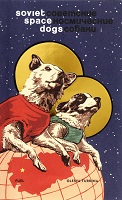 Dr Olesya Turkina is a Senior Research Fellow at the State Russian Museum, and the Head of an MA Programme at St Petersburg State University. She has a long list of exhibitions and publications to her name, including a large number on the topic of Space Exploration.
Dr Olesya Turkina is a Senior Research Fellow at the State Russian Museum, and the Head of an MA Programme at St Petersburg State University. She has a long list of exhibitions and publications to her name, including a large number on the topic of Space Exploration.
Soviet Space Dogs, the book at hand, is a curious mix of academic paper and popular treaty on the subject - (mainly) of the Soviet research programme of training and sending dogs into space to determine the feasibility of sending humans. The book is structured into six parts:
An Introduction to the topic to set the scene;
Unknown Heroes, which provides some background on the personalities, their theories, practical developments, fictional accounts, and of course the ever-present politics behind the development of space-flying capabilities.
The Heart of Laika, which focuses on the this specific flight – at once the most famous, and the most infamous flight (as it was the only one without any provision for the recovery of the passenger in the whole series of flights)
Belka and Strelka: Space's First Pop Stars – the 2nd successful orbiting flight, and the international fame of its crew (and their offspring!)
Paradise Lost, which briefly touches on the Bion programme (a topic worth several books in itself, I reckon), which moved on from dogs to monkeys and other creatures, which was at the end run in conjunction with the US, and was only canceled due to pressure from the public opinion regarding what these flights meant for and did to their involuntary passengers.
Plus we get a Chronological list of dog flights – all 42 which are known, including dogs flown, rocket, altitude, duration (for orbital flights), and the outcome of the flight for the dogs
Where do we start? Maybe with a reminder that the Russian space programme, including the dog flights, was always shrouded in secrecy and obfuscation. A lot of details are still not known, and might never be as they were not recorded, falsified, or contradictory details issued which cannot be disentangled after so much time.
Still, we meanwhile know a lot, or at least a lot more than was made public at the time... so here are a few snippets which struck me as new, thought-provoking, or simply interesting!
So, why did the USSR send up dogs to pave the way, in contrast to the Chimps NASA used? The answer, it seems, has something to do with Pavlov (guess where he's from), but just as much with how difficult apes are to handle, train, and control, even if they provide more representative results for humans, of course. And, apparently, results from dogs are still reasonably relevant and applicable to humans. And never mind the propaganda value of dogs service as pathfinders, scouts for humans – man's best friend, again. (try that with apes...)
Laika's nickname in the US was 'Muttnick' before she was officially named by the Russians. On the one hand this is silly and funny. And on the other strangely fitting – Muttnick plays on Sputnik, which in turn means Companion. And there we are again with the dogs, of course!
We also see the affection for their charges of scientists, politicians, and staff working with the dogs; and their sorrow at accidents which killed dogs, never mind Laika's one-way ticket to a heat death...
This strongly corresponds to Nick Abadzis' graphic album Laika, where some of the staff refuse to do further work with dogs on the programme due to her flight without return provisions.
On the other hand – (self)sacrifice was program and culturally/ideologically accepted and expected, from humans and animals alike (and yes, the animals were very much regarded as early Cosmonauts).
“The West felt genuine compassion for Laika. She was perceived as an innocent victim, caught up in the brutal Cold War drive to be first at any cost. To Soviet children, the story of Laika was a heroic fairly tale about a kind and intelligent dog that had flown away into space. To adults, her fate ostensibly resembled their own. It was not accident that on the bas-relief of The Monument to the Conquerors of Space, erected in Moscow in 1946, the image of Laika […] appeared alongside images of nameless engineers and scientists […]. It came to symbolise the hopes and dreams of an entire generation of Soviet people.”
And still, again, of all the Soviet flights with dogs or humans, this one was the only one without return provisions...
Laika was not the first dog in space – her flight was the 23rd in the series! She was the first living being that went into orbit, though. And all the fame was hers (and later Belka's and Strelka's, who with the 35th flight became the 2nd successful orbital flight).
All the veneration of Laika which Turkina shows strongly put me in the frame of mind of St Olga, from William Gibson's magnificently claustrophobic Hinterlands. The cover, depicting Belka and Strelka as Orthodox icons, is very much par for the course here.
The book is covered in pictures – of official propaganda based on the dog flights, of [memorial] items for the flights, of postcards and stamps, and of all kinds of commercial goods which were re-branded and styled to cash in on the space theme, all of which of course are now collectors items.
The book also investigates the impact these flights had on Soviet culture, and especially on children, and children's literature – these reflections I found highly interesting, and very telling as an indicator of how these things changed the view of the world at the time in the Eastern block.
If you're interested in the history of space flight, the space race, or the sociological impact of these early successes (the failures did not get reported) then this is a book for you.
Title: Soviet Space Dogs
Author: Olesya Turkina
Reviewer: Markus
Reviewer URL: http://thierstein.net
Publisher: FUEL
Publisher URL: http://www.fuel-design.com
Publication Date: 2014
Review Date: 150730
ISBN: 9780956896285
Pages: 239
Format: Hardback
Topic: Space Exploration
Topic: Space Dogs
